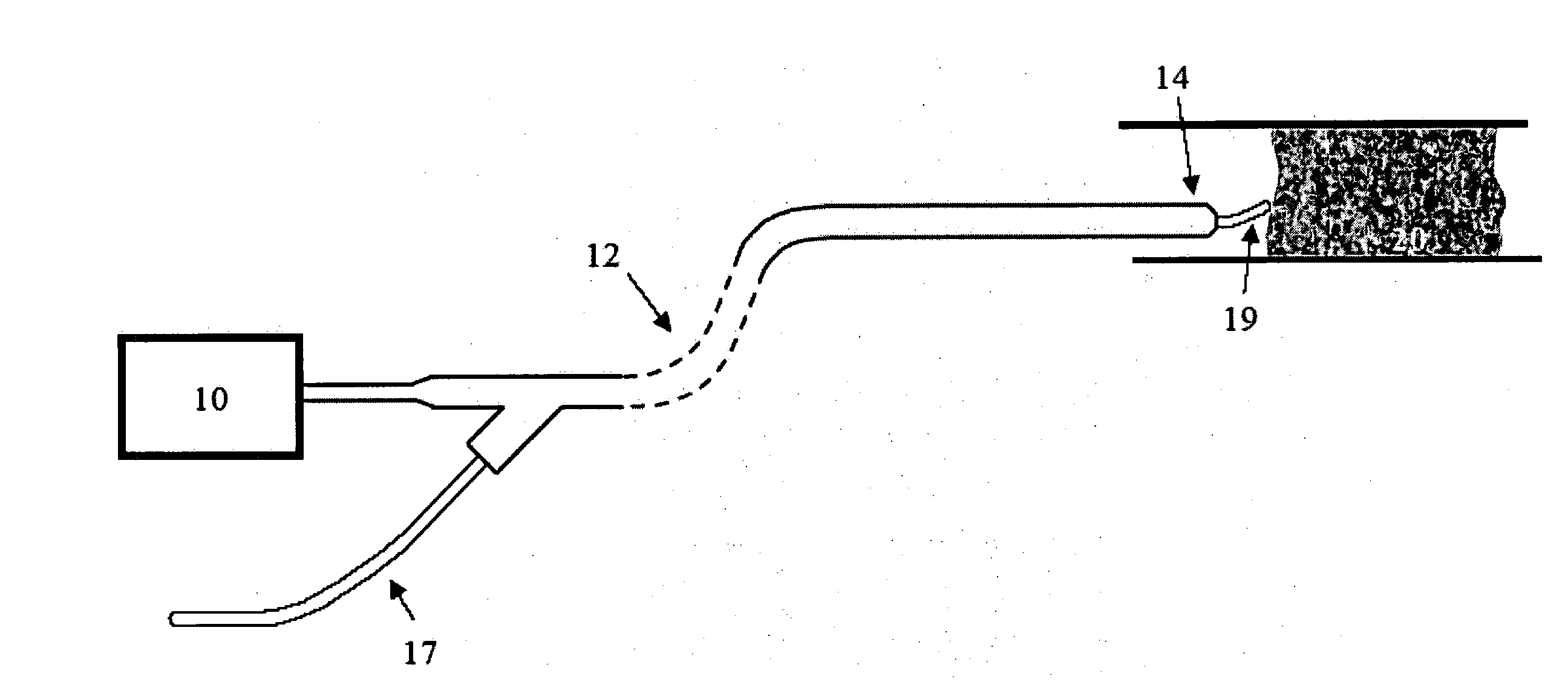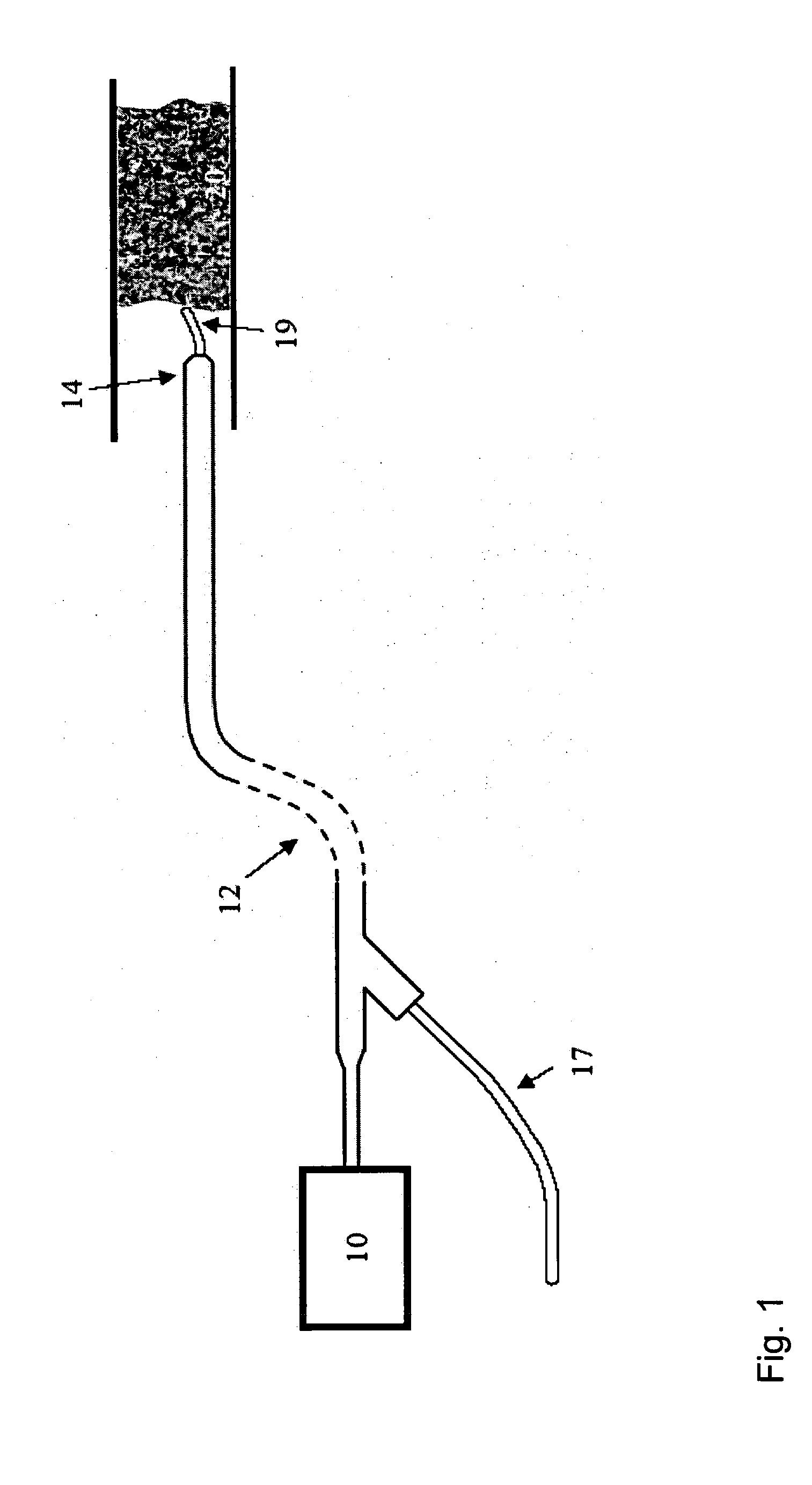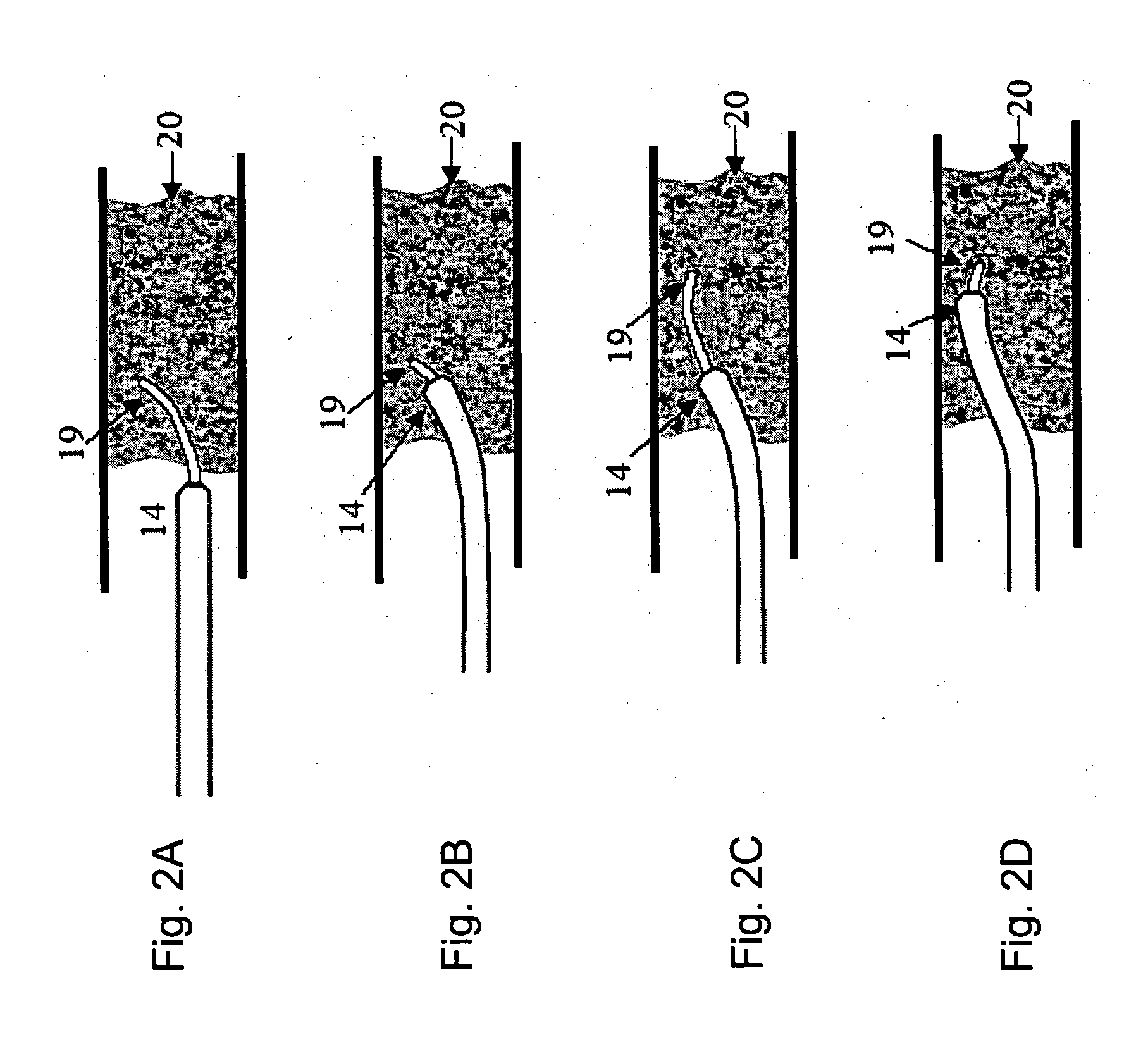Image-guided laser catheter
- Summary
- Abstract
- Description
- Claims
- Application Information
AI Technical Summary
Problems solved by technology
Method used
Image
Examples
Embodiment Construction
[0038] Referring initially to FIG. 1, illustrated is a schematic diagram of one embodiment of an image-guided laser catheter 12 constructed according to the principles of the present invention and a guidewire 17. FIG. 1 shows the catheter 12 as it would be used to cross a vascular stenosis. The guidewire 17 is first introduced into the patient's blood vessel percutaneously and advanced to a location proximal to an occlusion 20. A distal tip 19 of the guidewire 17 may have a slightly curved shape to allow the operator to steer the advancement direction of the guidewire 17. The catheter 12 is then introduced into the vessel over the guidewire 17. The catheter 12 has its proximal end (not separately referenced) connected to a console 10.
[0039] The catheter 12 and console 10 together provide a way to generate real-time intravascular images as well as a way to deliver ablative energy to the distal end 14. The embodiments to achieve these functions will be disclosed in detail later in th...
PUM
 Login to View More
Login to View More Abstract
Description
Claims
Application Information
 Login to View More
Login to View More - R&D
- Intellectual Property
- Life Sciences
- Materials
- Tech Scout
- Unparalleled Data Quality
- Higher Quality Content
- 60% Fewer Hallucinations
Browse by: Latest US Patents, China's latest patents, Technical Efficacy Thesaurus, Application Domain, Technology Topic, Popular Technical Reports.
© 2025 PatSnap. All rights reserved.Legal|Privacy policy|Modern Slavery Act Transparency Statement|Sitemap|About US| Contact US: help@patsnap.com



